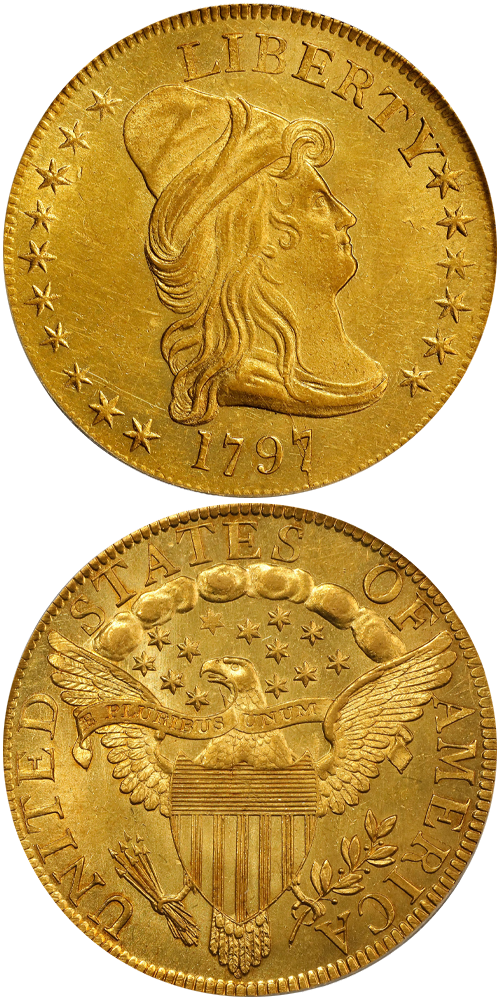1797 Capped Bust Right Eagle
Created as part of the Mint Act of 1792 as one of the fundamental denominations of the new Republic, the eagle was not produced until three years later in 1795. As was the case with the half eagle, the surety bonds required for key personnel to handle bullion were prohibitively large, so large that Congress was compelled to reduce the amount so that silver and gold could finally be struck. The first eagles were produced in smaller quantities than half eagles, largely based on the demand of bullion depositors. Half eagles proved to be more popular in commercial circles, and thus fewer eagles were requested. This remained the case throughout the early years of the denomination. Because of the larger value, eagles proved popular for international payments where paper money was not accepted. Quantities of eagles ended up abroad rather than spending time in domestic commerce. Production of Scot's Heraldic Eagle reverse $10 coins ceased in 1804 and the denomination would not be resurrected until 34 years later.
In 1797, the delicate Small Eagle reverse was replaced by a large Heraldic Eagle designed by Robert Scot and based upon the Great Seal of the United States. Three known die pairings were employed to produce the 10,940 Heraldic Eagle coins struck in 1797. The eagle punches employed for the Heraldic Eagle reverses of 1797 are generally attributed to assistant engraver John Smith Gardiner. While only one obverse die was used, three separate reverse dies were employed. BD-2 is chronologically the first of the die pairings used and shows a peculiar disproportionately thin neck closer to that of a chicken than that of our national bird. The equally scarce BD-4 variety also has a longer eagle neck, but the star arrangement below the clouds has a distinct pattern of three stars directly over the eagle's head, while the BD-2 has only two in that location. While an estimated 3,500 to 5,000 coins of this particular variety are believed to have been struck, perhaps as few as 100 are thought to survive. Very few surviving specimens are fully Mint State and those that have been certified are at the lower end of that spectrum.
The example to the left was sold by Stack's Bowers Galleries in the Harvey B. Jacobson, Jr. Collection, where it realized $180,000.






